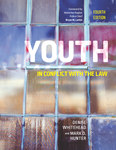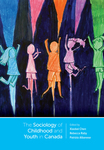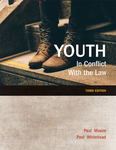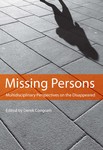We don’t actively support Internet Explorer
It appears that you are using Internet Explorer, which has been discontinued by Microsoft. Support has ended for versions older than 11, and as a result you may face security issues and other problems when using it.
We recommend upgrading to a newer browser such as Firefox, Google Chrome, or Edge for a much better experience across the web.
While this site may work with Explorer, we are not testing and verifying it, so you may run into some trouble or strange looking things.
Overview
Most youth who come in conflict with the law have experienced some form of trauma, yet many justice professionals are ill-equipped to deal with the effects trauma has on youth and instead reinforce a system that further traumatizes young offenders while ignoring the needs of victims. By taking a trauma-informed perspective, this text provides a much-needed alternative—one that allows for interventions based on principles of healing and restorative justice, rather than on punishment and risk assessment.In addition to providing a comprehensive historical overview of youth justice in Canada, Judah Oudshoorn addresses the context of youth offending by examining both individual trauma—including its emotional, cognitive, and behavioural effects—and collective trauma. The author tackles some of the most difficult problems facing youth justice today, especially the ongoing cycles of intergenerational trauma caused by the colonization of Indigenous peoples and patriarchal violence, and demonstrates how a trauma-informed approach to youth justice can work toward preventing crime and healing offenders, victims, and communities.Featuring a foreword written by Howard Zehr, case stories from the author’s own work with victims and offenders, questions for reflection, and annotated lists of recommended readings, this engaging text is the perfect resource for college and university students in the field of youth justice.
Table of Contents
Acknowledgements
Foreword, Howard Zehr
Introduction: Youth Justice that Heals
Chapter 1: A Framework for Trauma-Informed Youth Justice
Chapter 2: A History of Youth Justice in Canada—1867 to 1984
Chapter 3: Youth Justice Today—1984 to the Present
Chapter 4: Theory of Trauma-Informed Youth Justice—Why Do Young People Commit Crimes?
Chapter 5: Understanding Individual Trauma
Chapter 6: Collective Trauma, Colonialism, and Patriarchy
Chapter 7: Prison, Risk, and Punishment—A Trauma-Inducing Justice System
Chapter 8: Restorative Justice—The Worldview of Trauma-Informed Youth Justice
Chapter 9: Youth Justice as Trauma-Informed Care
Chapter 10: Trauma-Informed Prevention—Ending Cycles of Violence
Chapter 11: Victim-Centred Justice
Conclusion: Principles of Trauma-Informed Youth Justice
Notes
References
Index












